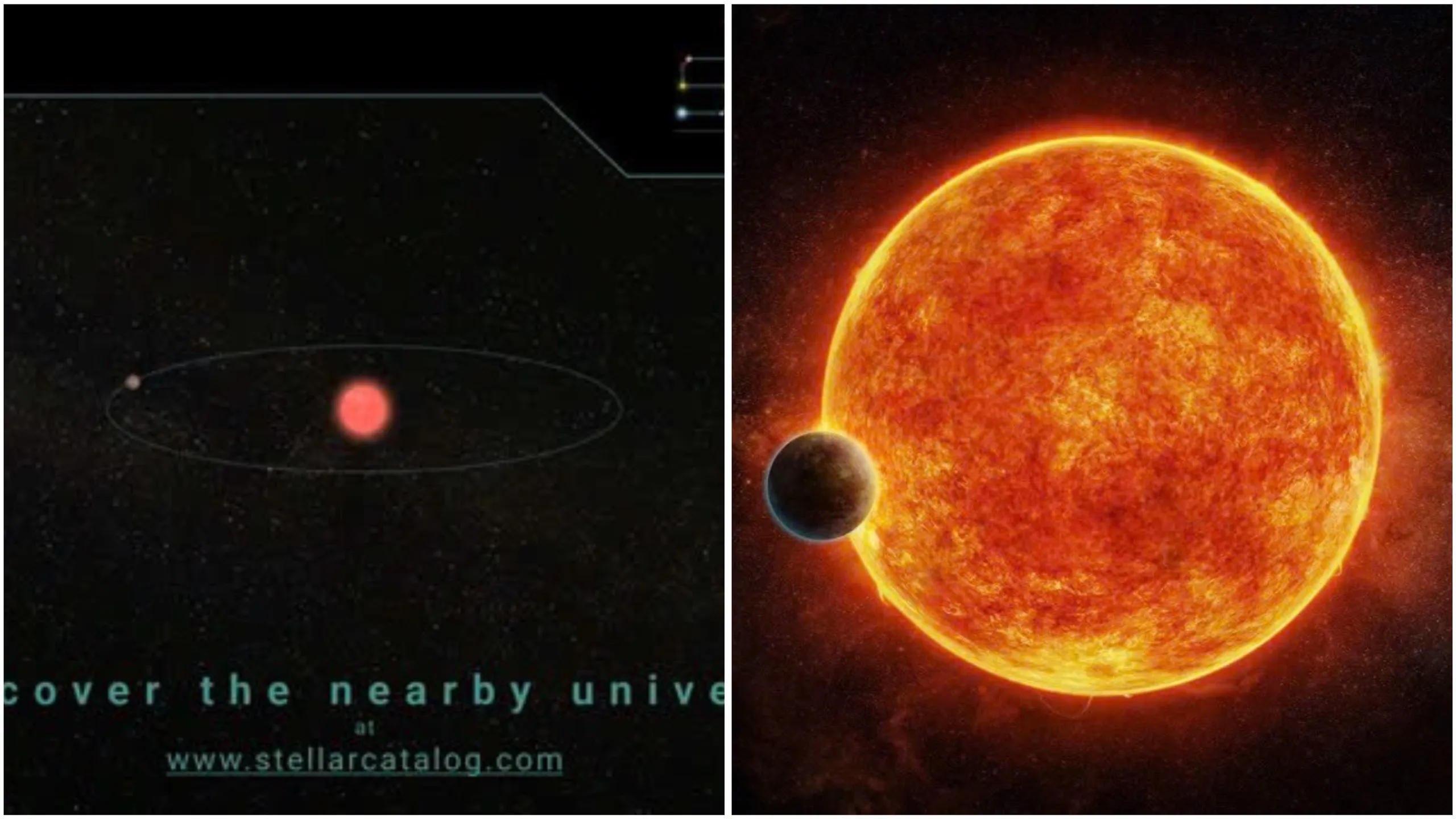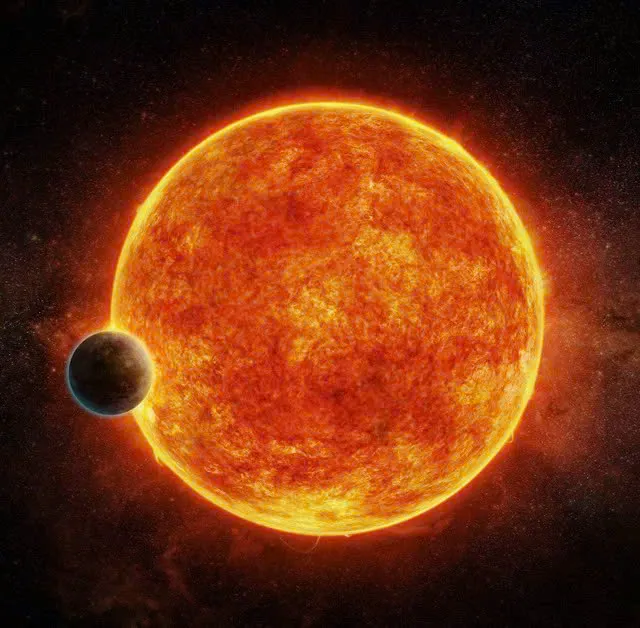
Using NASA’s TESS satellite, an international team of astronomers has discovered two ‘super-Earths’ orbiting red dwarf stars near our solar system. The discovery opens up new opportunities in the search for habitable planets.
According to a report on arXiv, a team of astronomers led by PhD student Mourad Ghachoui from the University of Liège (Belgium) confirmed the existence of two ‘super-Earths’ using NASA’s TESS satellite.
TESS is currently surveying about 200,000 of the brightest stars near the sun with the goal of detecting planets transiting their central stars. To date, NASA’s mission has found more than 7,200 exoplanet candidates, of which 543 have been confirmed.
Ghachoui’s team detected signals indicating the presence of two planets passing by two M-class red dwarfs, called TOI-6002 and TOI-5713, respectively.

Red dwarf TOI 6002 as catalogued by Stellar Catalog./ Photo: STELLARCATALOG
TOI 6002 is about 105 light years away from the solar system, with a mass equal to 24% of the sun. TOI 5713 is 134 light years away from the solar system, with a mass equal to 27% of the sun. These two M-class red dwarfs both have at least one planet orbiting them.
The research results recorded that the planet of the star TOI 6002, TOI-6002 b, has a radius 1.65 times larger than Earth and a mass nearly 4 times larger. The planet takes 10.9 days to complete an orbit around the central star.
As for TOI 5713’s planet, TOI-5713 b, it is about 77% larger than Earth and has an estimated mass of 4.3 times that of Earth. TOI-5713 b takes 10.44 days to orbit its star.
The authors of the report classify the two newly discovered planets as ‘super-Earths’, a group of planets larger than Earth but not quite as large as Neptune.
Although astronomers have not yet determined the exact composition of the two planets, they believe they could be rocky or watery. The team concludes that both TOI-6002 b and TOI-5713 b are exciting targets for future research, exploring the evolution of planets that evolved from Venus-like forms but still have the potential to support life.
Previously, in July, scientists discovered an exoplanet called LHS 1140 b, located in the habitable zone (the Goldilocks zone). The exoplanet is believed to have the potential to have oceans and an atmosphere.

Planet LHS 1140 b and its host star./ SCI NEWS SCREENSHOT
The planet, often called LHS 1140 b or “super-Earth,” is about 1.7 times larger than Earth and is about 48 light years away, according to Newsweek. With a mass about 6.6 times that of Earth, it is likely made of rock and a dense iron core. First discovered in 2017, LHS 1140 b has now been determined to be a rocky planet similar to Earth, according to a new paper in *The Astrophysical Journal Letters*.
“This discovery marks a major milestone in the search for potentially habitable exoplanets,” said Charles Cadieux, co-author of the paper and a PhD student at the Université de Montréal in Canada.
Using data collected from the James Webb Space Telescope (JWST), scientists found that LHS 1140 b is less dense than a rocky world, and that 10 to 20 percent of its mass could be water. This means the planet could be an icy world with a liquid ocean beneath its ice, similar to Jupiter’s moon Europa.
The ocean could have a surface temperature as warm as 20 degrees Celsius and be about 4,023 kilometers wide — roughly half the size of the current Atlantic Ocean, according to the paper.
The Canadian team also found that the planet has an atmosphere, which could contain a similar amount of nitrogen as Earth. The presence of this atmosphere would allow the planet to sustain liquid water on its surface.
“LHS 1140 b is one of the best small exoplanets in the Goldilocks zone for maintaining a thick atmosphere, and we may have found evidence of air on this planet. While we need more JWST observations to confirm the nitrogen-rich atmosphere and look for other gases, this is a very promising start,” said Ryan MacDonald, co-author of the paper.



